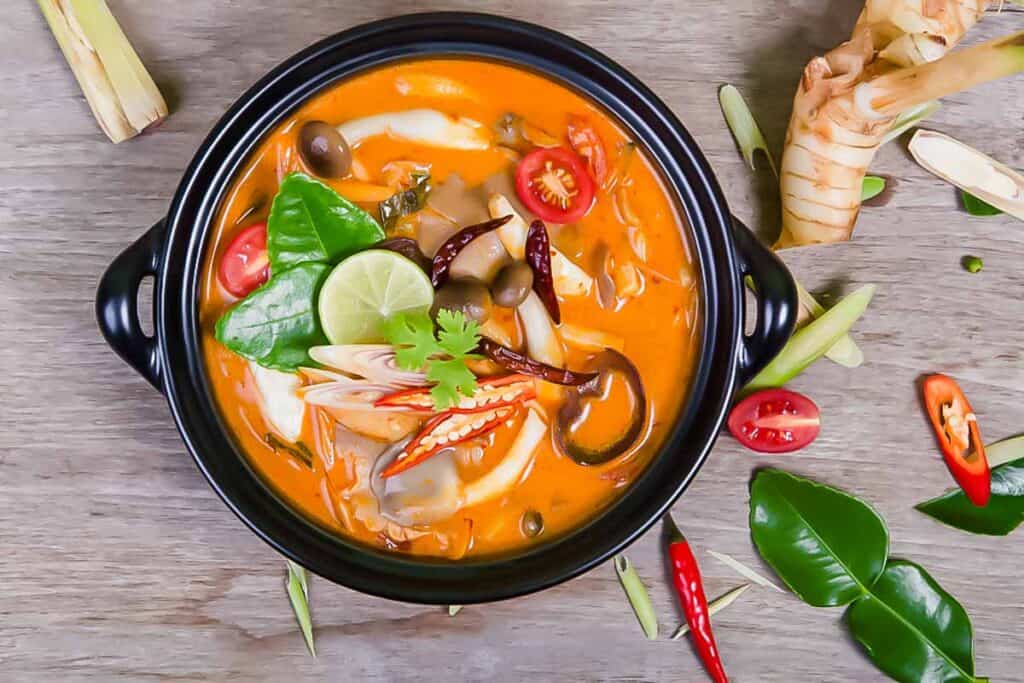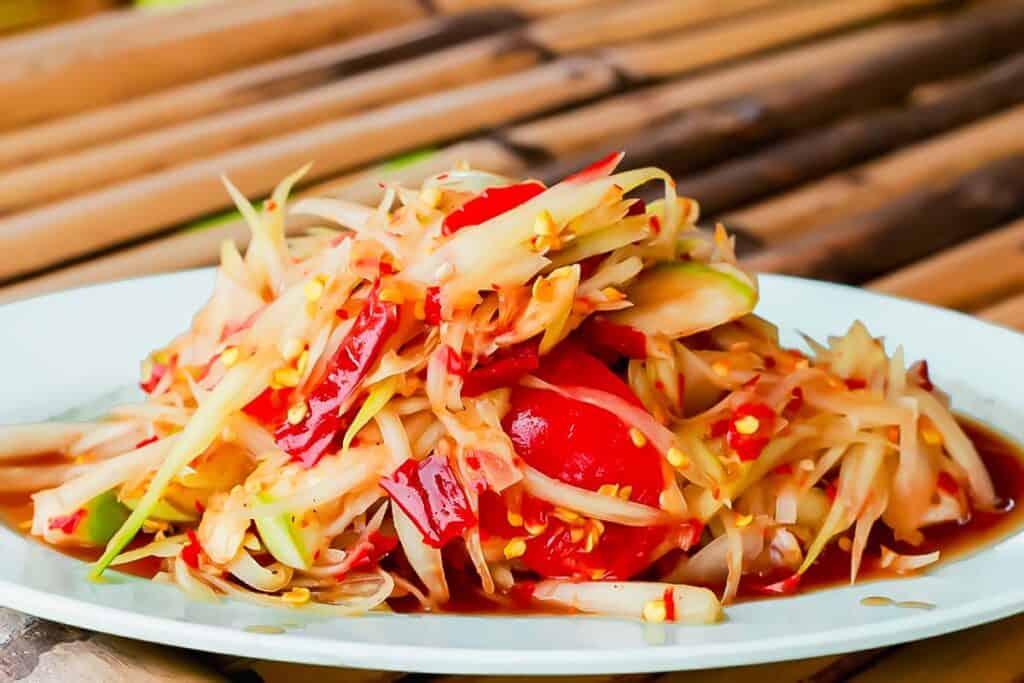With its paradoxical nature of off-putting aroma yet transformative flavor, fish sauce sits at the heart of many delicious savory dishes. If you’re out of this mainstay Asian condiment, don’t fret — there are plenty of excellent fish sauce substitutes to consider. They’ll keep your dishes tasting true to their original flavors and ensure your meals produce the umami, earthy flavor they were meant to have.

What is fish sauce?
Fish sauce is made from salted, fermented fish — most often anchovies — and has been cherished for thousands of years for its ability to impart a rich, savory and umami depth to various dishes. Its production involves a meticulous process of fermenting fish in barrels for up to two years, resulting in different grades of sauce suited for specific culinary applications:
- First pressing: This grade is prized for its concentrated flavor and is used as a finishing sauce.
- Second pressing: This is best for blending into dipping sauces with other ingredients.
- Third pressing: Renowned for its intense aroma and versatility, it is ideal for cooking.
Fish sauce enriches everything from pad thai and pho to stir-fries and salads. Despite its intense smell — a hallmark of its fermentation process — fish sauce is celebrated for its complex flavor profile, enhancing dishes with just a dash.
The best fish sauce substitutes
If you don’t have fish sauce on hand, don’t enjoy its taste or follow a vegan diet, there are luckily plenty of fish sauce substitutes that can be used in its place.
Soy sauce
This is one of the most common and similar-tasting condiments to fish sauce. However, while soy sauce has that savory, umami and salty flavor nailed perfectly, it’s missing that little edge of sourness that makes fish sauce unique. That’s why there are a couple of ways to make soy sauce an even better fish sauce substitute:
- Soy sauce and lime juice: A small squeeze of fresh lime juice adds just the right amount of sour flavor to the salty soy sauce. For one tablespoon of soy sauce, add half a teaspoon of lime juice.
- Soy sauce and vinegar: This option accomplishes the same thing as lime juice but offers another choice if you don’t have fresh limes on hand. Rice vinegar is the best choice. These two ingredients can be mixed in equal parts to substitute fish sauce.
- Soy sauce and anchovies: Anchovy paste is your best choice here. Often sold in small tubes near the tomato paste in a grocery store, anchovy paste is typically used in Italian dishes like an Instant Pot bolognese recipe to bring a subtle underlying umami flavor. When combined with soy sauce, the paste mimics the original taste of fish sauce incredibly well. You can also use one finely chopped anchovy if you don’t have the paste.

Tamari
Like soy sauce but made without wheat, tamari is the go-to choice for many gluten-free eaters. Tamari has a richer, more robust and less salty umami flavor than soy sauce. You can replace fish sauce with tamari at a 1-to-1 ratio or start with a little less, adding more to taste.
“I love fish sauce for adding umami to dishes like curry or stir fries and it’s my secret ingredient in Caesar salad dressing. When I don’t have it, minced anchovies are my favorite substitute because you still get that funky fishiness with the umami, but miso paste or soy sauce are good substitutes, too.”
— Robin Donovan, All Ways Delicious
Coconut aminos
This is a savory, salty sauce made from the fermented sap of coconut palm and sea salt. Coconut aminos have gained popularity as a healthier alternative to soy sauce and an excellent substitute for fish sauce, especially for those following a vegan or vegetarian diet or individuals with allergies to soy or gluten. Liquid aminos can be used in the same proportions as fish sauce, but you may want to add salt due to its lower sodium content. Try it in this wonderful tofu marinade to see its flavor shine.
Worcestershire sauce
This condiment and other similar steak sauces share numerous flavor compounds with soy and fish sauces, making them exciting substitutes. These sauces often incorporate glutamate-rich ingredients like mushrooms or anchovies, alongside spices, sugar and fruit to build a rich flavor profile. While Worcestershire might not mimic fish sauce’s taste exactly, it can still enrich dishes with a complex, robust taste. It’s best suited for cooked dishes, like sauces and stir-fries, where its depth can shine without overpowering. Since many steak sauces contain vinegar, adjusting acidic components in your recipe may be necessary.
Bouillon
Whether derived from mushrooms, vegetables or meat, bouillon is rich in glutamic acids, offering a depth of flavor akin to fish sauce. While some bouillons are high in sodium, low-sodium options exist. It can be used to season soups, sauces and even raw salads like this bok choy salad.
Seaweed
Also rich in amino acid glutamate, seaweed offers a natural umami flavor, making it an excellent substitute for fish sauce. Varieties like nori and kombu are exceptionally high in glutamate, enhancing broths, soups and other dishes with their savory depth. For a milder umami taste, wakame is a preferable option. Seaweed is available in fresh and dried forms. It can be easily incorporated into various recipes, from salads and broths to sauces for those seeking a plant-based alternative to fish sauce.

The bottom line
Finding a suitable substitute for fish sauce is easily achievable with various pantry staples and natural ingredients. Whether you opt for coconut aminos, Worcestershire sauce, bouillon or seaweed, each alternative offers a unique flavor profile that can mimic the umami depth fish sauce brings to dishes.
Gina Matsoukas is the writer, photographer and recipe creator of Running to the Kitchen. Focusing on healthy, seasonal, whole-food recipes, her work has been featured in various online and print publications including Food Network, Prevention Magazine and Women’s Health. Gina lives in central New York, where she enjoys an active outdoor life.